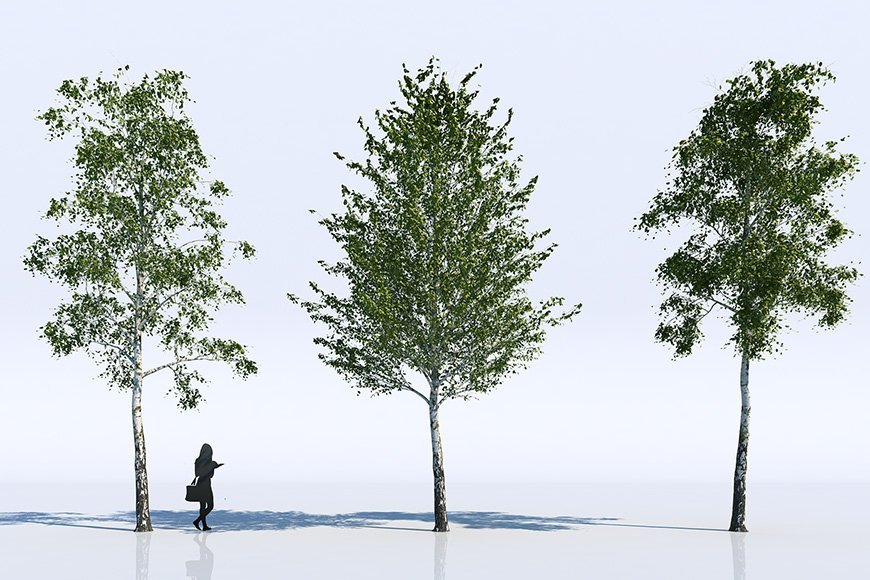Vray Proxy Trees Free Download

The file in fact contains a real treasure of useful vray materials: Maserati and Audi car with Proxy and Vrmesh, palm and trees with proxy, vrmesh and sketchup 3d model, and finally, the HDRI image used to render the scene made with vray 2.0. #proxy #tree. Landscape Trees & Shrubs.
Some time ago I posted a tutorial about V-Ray 1.5, there was a part about proxy and I posted this image:. There is about 2,333 billions of polygons. This is just a simple preview of proxy power. Part 1: Theory You know what proxy can do now I will explain how it works. Proxy is an object that allows you to import mesh from external file at render time only. This can save a lot of memory while you work on your scene.
For example, you have a lot of high-poly trees and you really don't need to see them all the time in viewport. By exporting them to V-Ray proxy you can speed up your workflow, and you will be able to render more polygons.
If you want to import mesh, you need to export it first. This is obvious. You can do this in 2 simple ways: 1. Select your object. Click right mouse button and in quad menu select: 'V-Ray mesh export' option. Select your object and write down in maxsript: ' doVRayMeshExport() '.
This 2 ways will cause the V-Ray Mesh Export dialog to appear. Here is describe of options: Folder - of course in this folder will be saved your mesh. Export as single file - When you export 2 or more objects this will merge them into one V-Ray proxy mesh. File - name of mesh. Export as multiple files - If this is selected V-Ray will create one file for one object. Automatically create proxies - It will export, and create proxy.
All transformations will be aved as wall as materials. But objects that you exported will be deleted. Useful informations: - Remember that if you want export mesh it must be ready to render. You can't modify V-Ray mesh. - V-Ray proxy you can find in objects list in V-Ray section.
- This is everything about theory. Now remember some usefull tips. - When you want create multiple proxy of the same object it will be best way to create one and copy it with instance option. Part 2: Proxy in use. Now I will describe how V-Ray proxy helped me in creating this scene (here is more than 500 mln of polygons). At first i take one of models from Archmodels vol.31. Now attach one object (trunk) to leaves.
But remember to match materials ID's. This will create one multisub object material for tree.
Create proxy from this tree. After exporting your object will look like this. To copy any proxy you need to use instance option. I created more proxies using this way. For viewing proxies in viewport I prefer bounding box option. Here you can see render if this trees. I put here one plane, physical camera and sky and sun system.
More informations about this you can find in my last tutorial. Here is an grass segment. As you can see it have a lot of polygons:). I exported this segment to V-Ray proxy and created beautiful grass plane;). After rendering it looks like this. Here is attaching again of car that i merged to scene.
This is very important if you wouldn't do this you will have problems with materials 13. Now just put proxies there where you want your car to appear and render.  With regards Tomasz Wyszolmirski Evermotion Team.
With regards Tomasz Wyszolmirski Evermotion Team.
WHERE TO GET TREES for your SketchUp Models In this tutorial, we’re going to talk about some of the places you can go to get trees for use in your SketchUp models! Do you like these SketchUp tutorials and videos? If so, please consider or by visiting my THE SKETCHUP ESSENTIALS COURSE – PRE-ORDER TODAY FOR 40% OFF! LAUBWERK EXTENSION SKATTER EXTENSION (Affiliate Link) In this video, we’re going to talk about some of the options you have available in SketchUp to add trees and vegetation to your models. The first thing you have to ask yourself is what you’re using the trees for, as this can dramatically effect what you’re looking for. If you’re looking for trees for a photorealistic rendering, you’re going to have to look for much more detailed trees than if you’re doing a house model and are looking for simple 2D face me plants. • 3D Warehouse – There are thousands of tree models, both 2D and 3D, available with a simple search.
However, you do have to be careful, as some of the models in the 3D warehouse can have quite a large file size. My recommendation as you find models that you like is to create a collection and start saving models to it for easy access later. • Laubwerk Extension – You can download it from the link in the notes above – there’s a free version of this extension that can generate several different kinds of trees. This one is interesting because it brings the trees in as proxy objects in your model, meaning that you never actually see the geometry in your SketchUp model, but instead you just export it to a rendering program like Vray or Thea Render, and the rendering program renders the trees. This avoids dealing with slow SketchUp models trying to render all the geometry from the branches and faces. • Skatter – Skatter is a geometry scattering extension that allows you to randomly scatter objects across geometry.